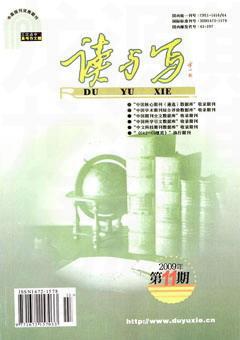On Millet’s Les Glaneuses
Abstract: Millet “the son of the earth” uses his magic paintbrush to create the immortal work--Les Glaneuses. In Les Glaneuses, Millet depicts three peasant women working in autumn. The bold and rigorous lines and different yellow shades have caused my boundless imagination about the motive of the painter Millet liked to draw the lower class because he had Socialist leanings. He often attempted to show his political leanings through the subjects he chose.
Key words: Millet;Les Glaneuses;painting;peasant
中图分类号: I 106文献标识码: A文章编号:1672-1578(2009)11-00026-01
Millet “the son of the earth” uses his magic paintbrush to create the immortal work--Les Glaneuses. The bold and rigorous lines and different yellow shades have caused my boundless imagination about the motive of the painter.
Les Glaneuses, painted by Miller, depicts after cutting wheat three peasant women in the foreground are collecting stray grains of wheat. They are wearing rough yellow clothes and old yellow shoes and on their sallow faces, I cant see any exact expressions. In the background are farmers who are busy with harvesting golden wheat. The whole painting is composed of different shades of yellow, which makes the whole picture full of mysterious tone. We should appreciate this painting not only trough the painting itself, but also through the motives of the painter concealed under the painting.
Millet draws autumn harvest, peasant women and yellow earth because he was “the painter of earth”. Millet, born in 1814, was one of children of a peasant, living a life of extreme penury. His poverty and intermittent contact with peasants made him understand the importance of autumn and earth, thus furthering his understanding of peasants life. He knew autumn meant harvest and food which were vital for peasants life. Therefore he had a strong feeling about peasants life and chose this as the subject of his painting.
In Les Glaneuses, Millet depicts three peasant women working in autumn because this season means hope for living. Even though what they are collecting are stray grains of wheat that are what the upper class has left behind, these grains are their hope of living. The long times working makes them feel run down, but they dont even straighten their backs to have a rest because they are busy with their harvesting. After their harvesting, they can use these grains to make flour, bread and all kinds of delicious food. Using this food, they can feed their children and make their husband a rich dinner. Therefore on the picture, these women are holy and dignified, bathing in a bright light which makes them be close to the God—the earth that gives them means of subsistence. They dont pay attention to the others in the distance, for wt they are collecting are their gains.
Millet liked to draw the lower class because he had Socialist leanings. He often attempted to show his political leanings through the subjects he chose, He used the style of his painting which portrayed idyllic settings as a way to attack the upper classes while dignifying the working class. Les Glaneuses was considered a painting that implied a social criticism. In a harvest season, all peasants should be happy, but from the sallow faces of three women, nobody can see cheerful expressions on their faces because they lead a bitter life and they are collecting what the upper class has left for them. All human beings are the children of the earth, but there are such huge differences between the working class and the upper class. People in the background are farther from the ground, but they are rich, while three women, typical proletariats, who are close to the ground, also closer to the earth, are poor. The color of the background is light yellow, but in the foreground, around three women, the color becomes deeper because they are burdened by heavy pressure of life and what they are picking up is not only grains, but also the hope of life.
References:
[1]http://www.xici.net/b502223/d81043466.htm[EB/OL].
[2]http://tjtong.enorth.com.cn/system/2008/09/18/003686698.shtml[EB/OL].
作者简介:王茂娟(Wang Mao-juan)(1976.11-),女,四川乐山,乐山师范学院外国语学院讲师, 硕士, 主要从事英语语言学研究。
- 读与写·教育教学版的其它文章
- A Tentative Study of Pynchon and His Works
- Yan Fu’s Thoughts of Translation
- The Study of Three-paragraph Argumentative Writings under Scaffolding Theory
- Reflections on Elizabeth Bishop’s Poem-The Moose
- Discourse Power and Translator’s Style
- On Natural Speech’s Role in Chinese Students’ English Listening Comprehension

